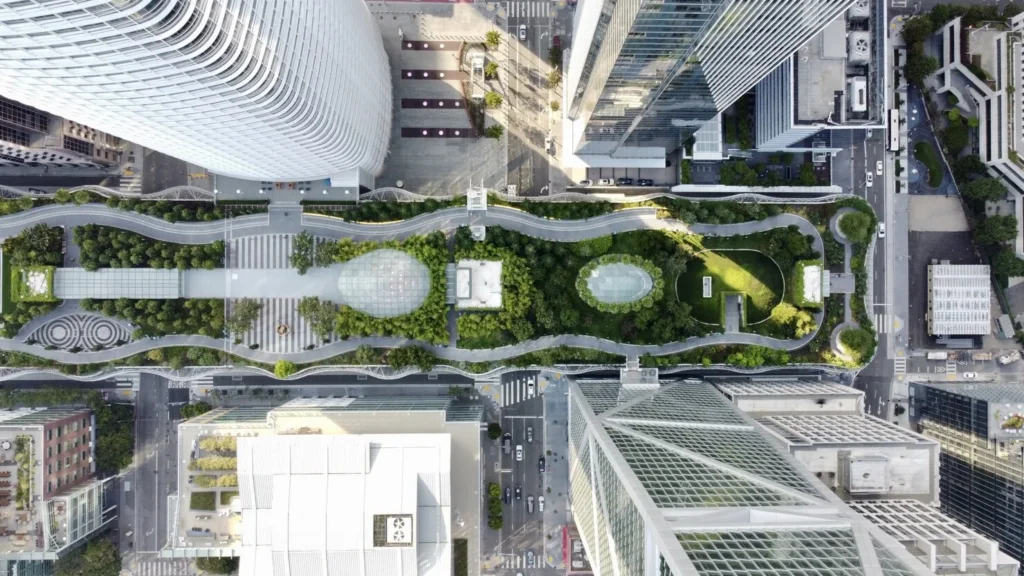Table of Contents
- Unique Architectural Innovations
- Sustainable Building Practices
- Integration of Technology in Architecture
- Urban Green Spaces
- Community-Centered Designs
- Challenges and Solutions in Modern Architecture
- Future Trends
Unique Architectural Innovations
Architecture is currently undergoing significant innovations, pushing the boundaries of traditional designs. From parametric designs to fluid forms, these designs reflect the creativity and technological advancements shaping urban landscapes. Architects are exploring new materials, shapes, and functionalities to create iconic structures. One trend is biomimicry, which draws inspiration from natural forms and processes to design aesthetically pleasing, functional, and sustainable buildings. This trend leads to innovative designs like self-shading buildings and water-harvesting facades, creating an urban environment that feels more connected to nature and promotes visual and experiential harmony.
Sustainable Building Practices
Sustainable building practices are gaining popularity due to environmental concerns. These practices focus on eco-friendly materials, energy efficiency, and reduced carbon footprints—examples of renewable energy sources in architectural designs are solar panels and wind turbines. Recycled and locally sourced materials, like reclaimed wood and recycled steel, are used to reduce environmental impact. This approach supports local economies and reduces transportation emissions. Additionally gaining popularity are living walls and green roofs, which enhance biodiversity, improve air quality, and give residents access to natural getaways. The earth is healthier as a result of these sustainable actions.
Integration of Technology in Architecture
Technology integration in architecture is revolutionizing building design and construction, with technologies like Building Information Modeling (BIM) and 3D printing improving efficiency and accuracy. Intelligent building technologies, such as automated lighting, climate control, and security systems, enhance functionality and comfort. The Internet of Things (IoT) enables communication between devices and systems, creating a cohesive living environment. Smart thermostats adjust temperatures based on occupancy patterns, while lighting systems optimize energy use. These features improve user experience and contribute to significant energy savings, making buildings more sustainable and cost-effective.
Urban Green Spaces
Urban green spaces are crucial for improving the quality of life, providing air quality, recreational opportunities, and aesthetic beauty. Vertical gardens and rooftop parks are famous for providing fresh air. They help mitigate the urban heat island effect, which causes cities to be warmer than rural areas. Green spaces promote physical and mental well-being by providing places for exercise, socializing, and relaxation. They also serve as habitats for urban wildlife, enhancing biodiversity. Greenery can boost property values and attract businesses, contributing to the economic vitality of metropolitan areas.
Community-Centered Designs
Community-centered designs aim to promote social interaction and inclusivity by prioritizing the needs and preferences of the local community. These designs often feature multipurpose spaces for various activities, such as public gatherings and cultural events. They also focus on creating walkable neighborhoods with accessible amenities, encouraging social interaction, and promoting a sense of belonging among residents. Public spaces like plazas, parks, and community centers provide venues for social activities and events. Architects contribute to the community’s overall well-being by designing inclusive and adaptable spaces.
Challenges and Solutions in Modern Architecture
Modern architecture faces budget constraints, regulatory hurdles, and environmental impacts. To overcome these, architects must use creative thinking, efficient resource management, and cost-effective materials and construction methods. Modular construction and prefabricated components can reduce costs and construction time. Regulatory hurdles can be addressed by working with local authorities and staying informed about building codes and standards. Proactive communication and collaboration with policymakers can facilitate smoother project approvals. Incorporating sustainable methods, using eco-friendly products, increasing energy efficiency, and reducing waste are all part of addressing environmental issues. Prioritizing eco-friendly solutions and engaging with the community can create innovative, responsible, and resilient buildings. By tackling these challenges, architects can create sustainable, inclusive, and inspiring urban environments.
Future Trends
Urban architecture is set to evolve with innovative technologies and sustainable designs, with trends like modular construction, smart homes, and adaptive reuse dominating the architectural landscape. Mixed-use developments transform urban areas into vibrant, multifunctional spaces, combining residential, commercial, and recreational facilities. This creates self-sufficient communities, enhancing convenience and reducing transportation needs. The emphasis on sustainability and functionality will drive innovation in urban architecture, encouraging architects to develop adaptable, resilient, and future-proof designs that meet the evolving needs of urban populations.






